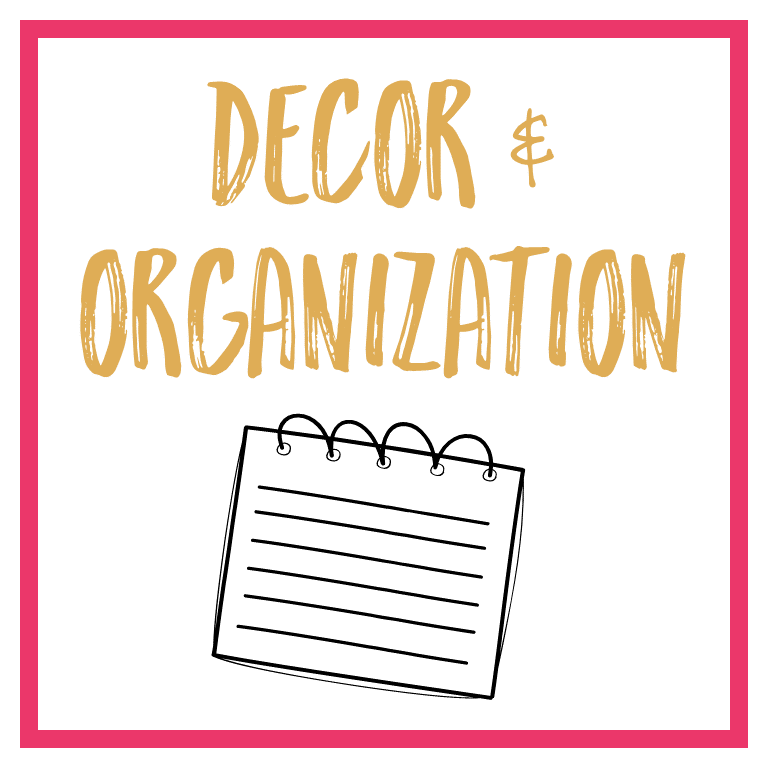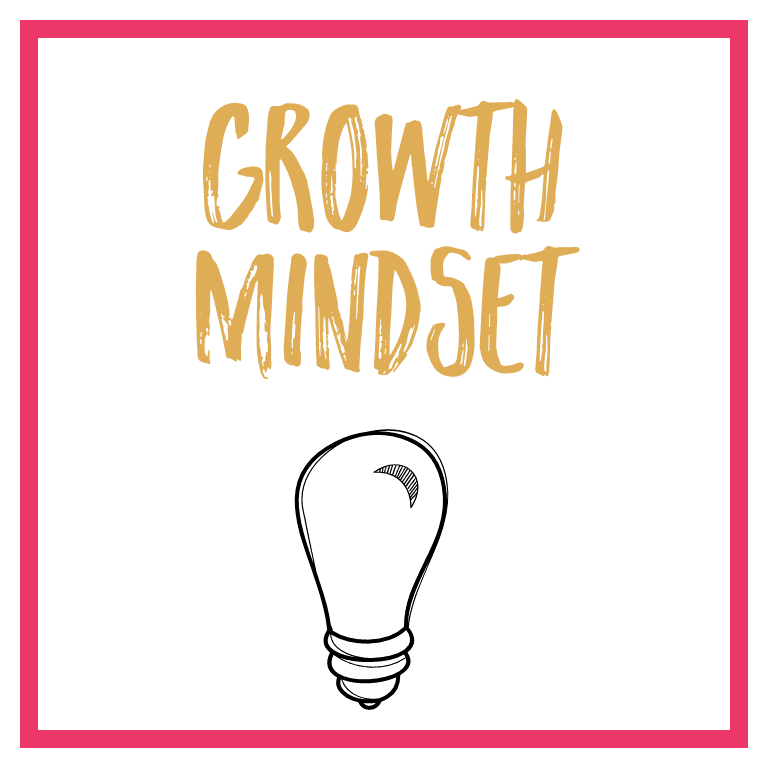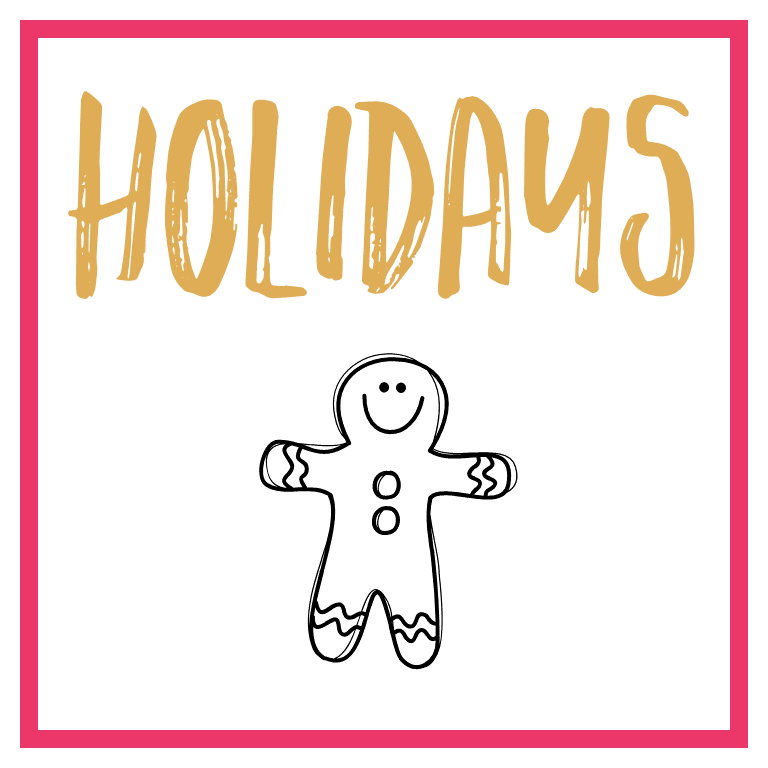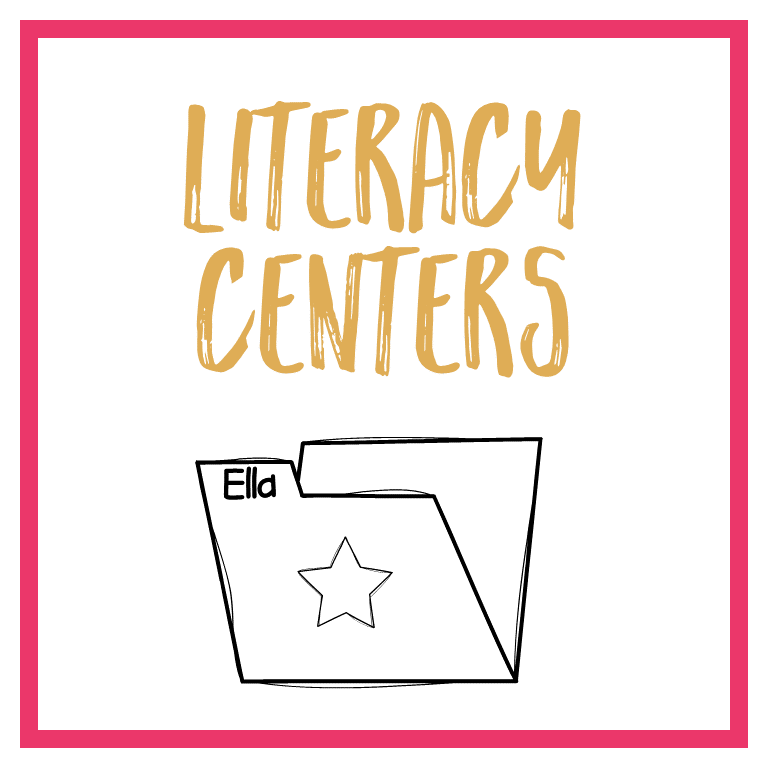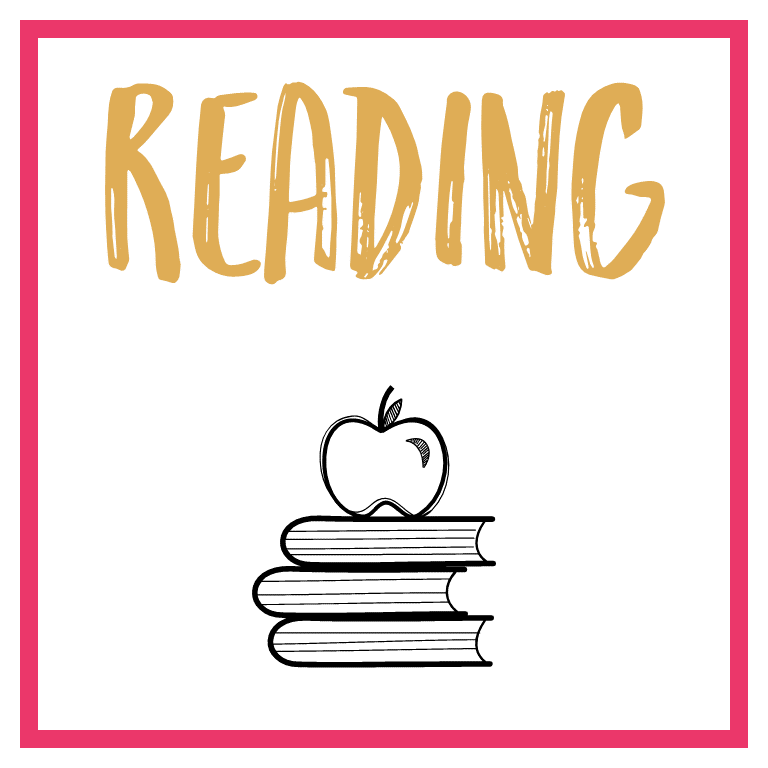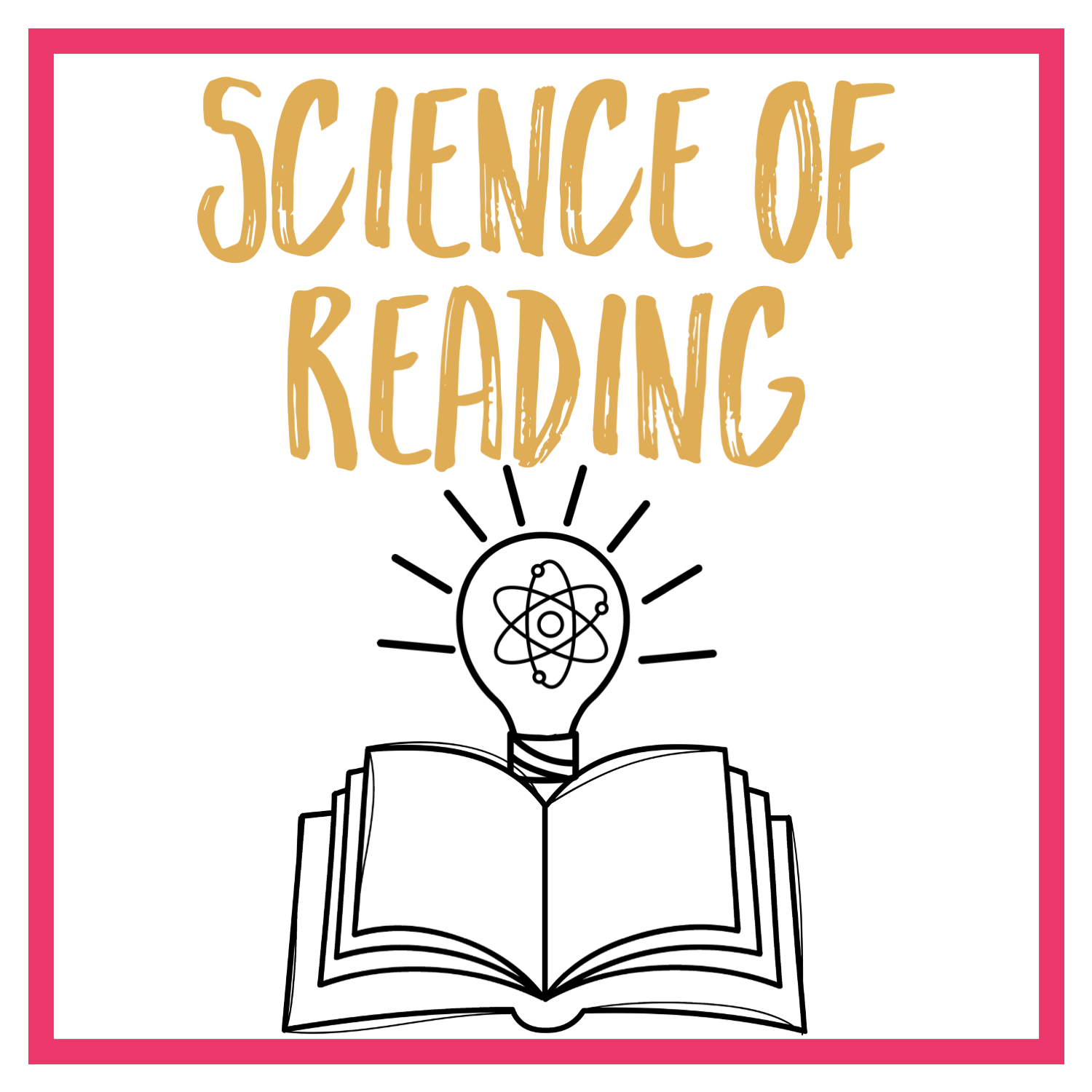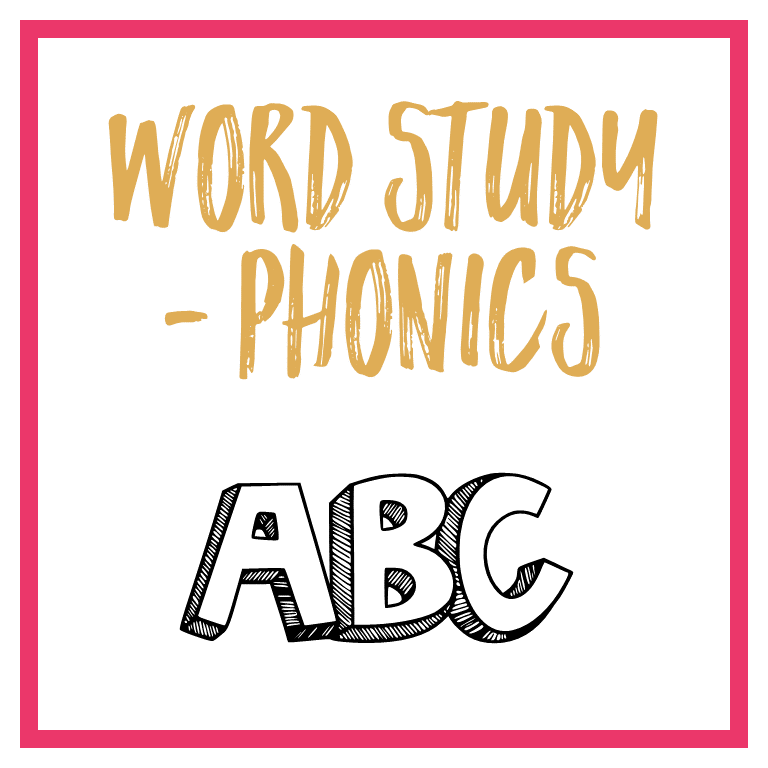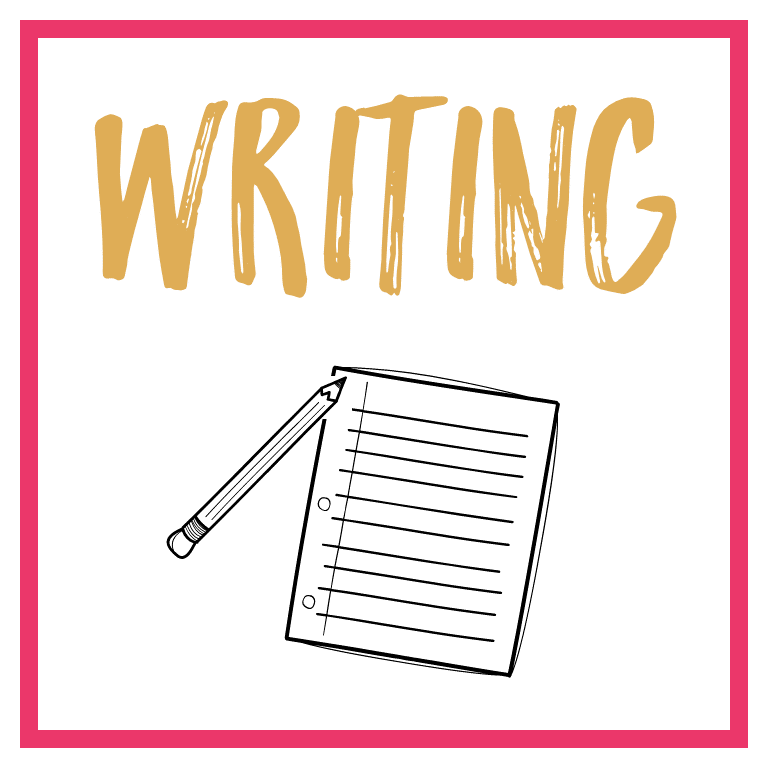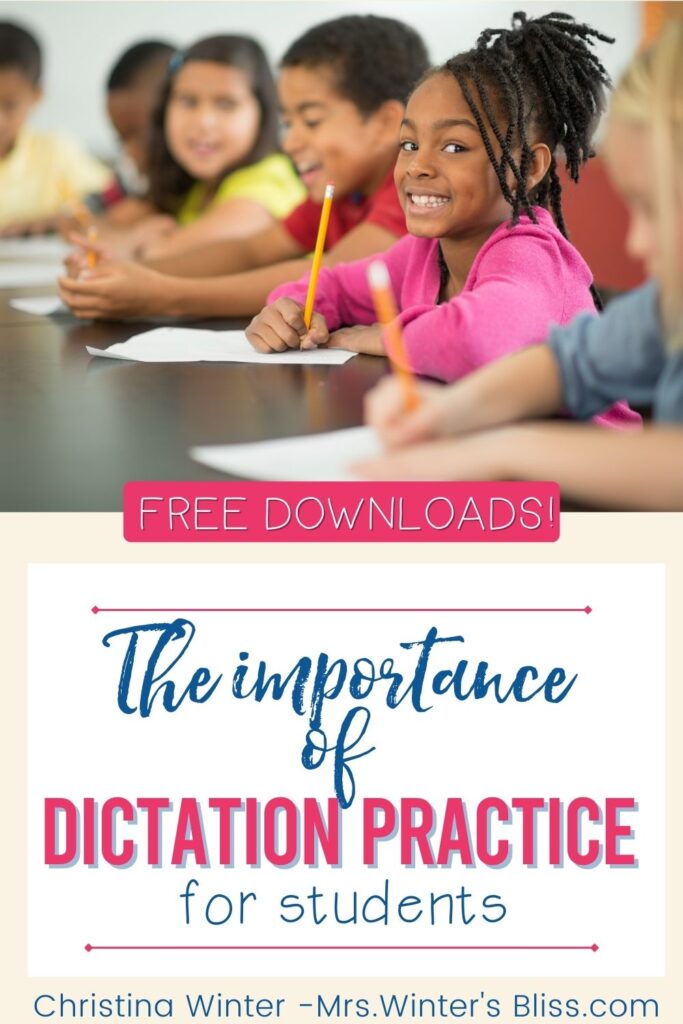
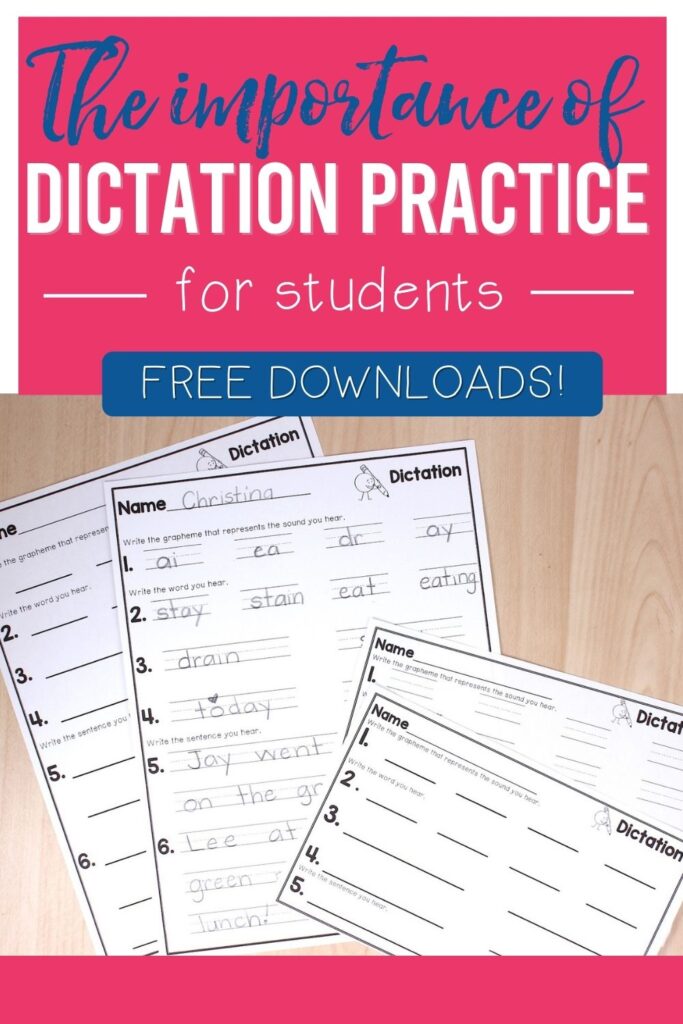
In this post, I explain what dictation practice is and how it helps emerging readers and writers. I provide you with a dictation routine, tips, and details about my yearlong dictation resource for kindergarten, first and second-grade students. Finally, I leave you with a FREE dictation worksheet!
Cn u rd ths? Of course, you can! Invented spelling is something we as primary teachers are accustomed to seeing (and deciphering)! Students spell in this way because they are able to apply the phonics skills they learn to their reading before they can apply them to their writing. While this type of spelling can make us smile, it isn’t a phase we want students to stay in for too long. So how can we help our students writing and spelling catch up to their reading?
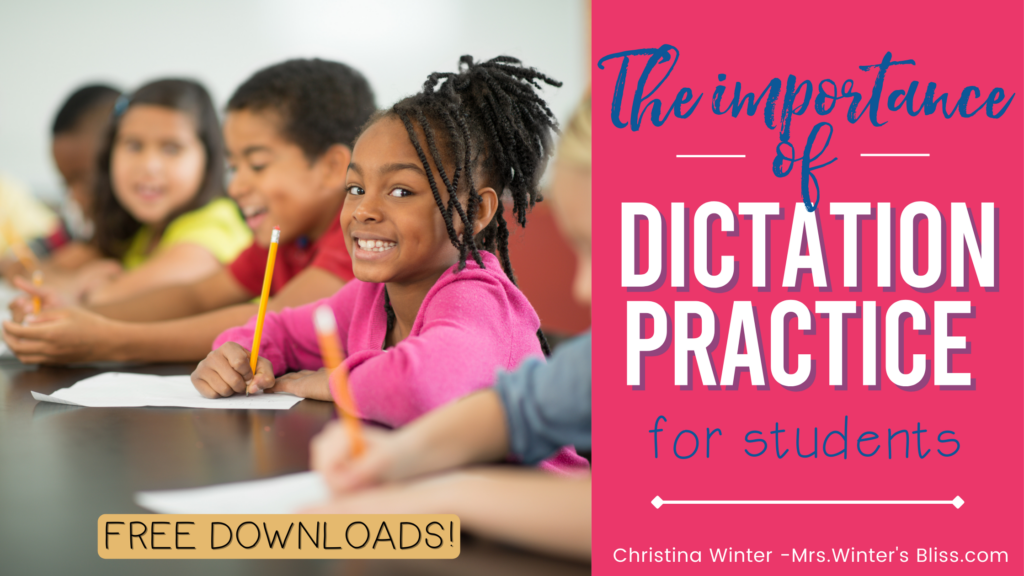
One powerful way is through dictation practice. DIctation practice was one of the BEST things I did with my first graders. They loved it and it was impactful! So today I’m excited to explain what dictation practice is and how it can help your emerging readers and spellers. I’ll provide you with a dictation routine and tips, and finally leave you with a FREE dictation sheet you can begin using right away!
What is Dictation?
Dictation is a whole or small group activity that offers students guided spelling practice. It is a systematic way for you to connect the skills you teach in reading to student writing.
We know that children progress at a much faster rate in phonics when the majority of the time is spent applying the skills to authentic reading and writing experiences. Application is how the skills stick. Just as decodable texts give students the opportunity to apply the phonics skills you have taught to their reading, dictation practice allows them to apply the skills to their writing.
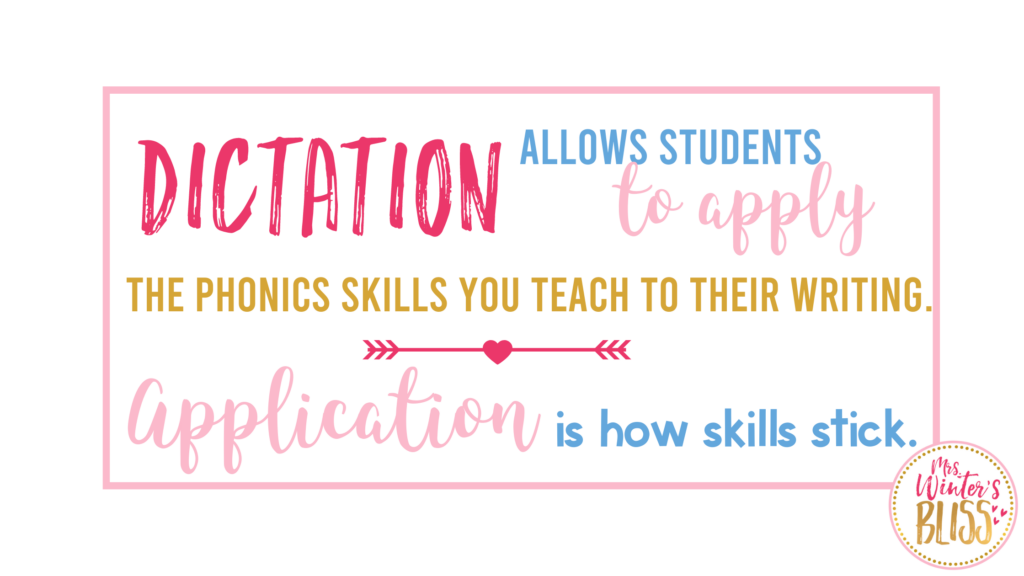
Research shows that students learn letter-sound relationships and spelling as they write. Dictation practice offers students an engaging way to accelerate their writing and spelling skills, with your guidance and corrective feedback to support them.
Dictation is not an assessment. It allows you to check students’ understanding of sound-spelling correspondences, but do not expect mastery. Your dictation exercise will contain the new target sound-spelling (these are sounds they are just learning), as well as review words from previous weeks. Dictation gives them extra practice they need to eventually reach mastery. When there are errors, provide them with immediate corrective feedback.
A Routine for Dictation Practice
The more opportunities students have to try out writing their new skills, the better! Ideally, dictation practice takes place twice a week and begins as early as kindergarten.
In the beginning, it may consist of you saying a sound and the students writing the letter. As students progress it can grow and build in length and complexity.
While this activity can be done in different ways, here is the dictation routine for kindergarten that Wiley Blevins recommends in his book, A Fresh Look at Phonics after students have practiced dication with all the letter sounds.
- Row 1- Letter sounds only. I say a sound, they echo and write the sound they hear.
- Row 2- Words with the new skill. I say the word, they echo and write the word they hear.
- Row 3- Words with review skills.
- Row 4- I dictate a sentence that uses target spelling words. Students write it.
This is a dictation routine for 1st and 2nd grade that Blevins recommends.
- Row 1- Words with the new skill. I say the word, they echo and write the word they hear.
- Row 2- Words with review skills.
- Rows 3 & 4- I dictate a sentence that uses target spelling words. Students write it.
When you begin to see students applying recently taught phonics skills in their writing, then you will know dictation is having a positive impact. Wiley Blevins encourages you to occasionally analyze students writing and look for evidence that they are transferring the phonics skills you teach in reading to their writing. Then adjust your instruction as needed. Form small groups for students who have not yet begun to transfer the skills to writing, as they will need additional practice.
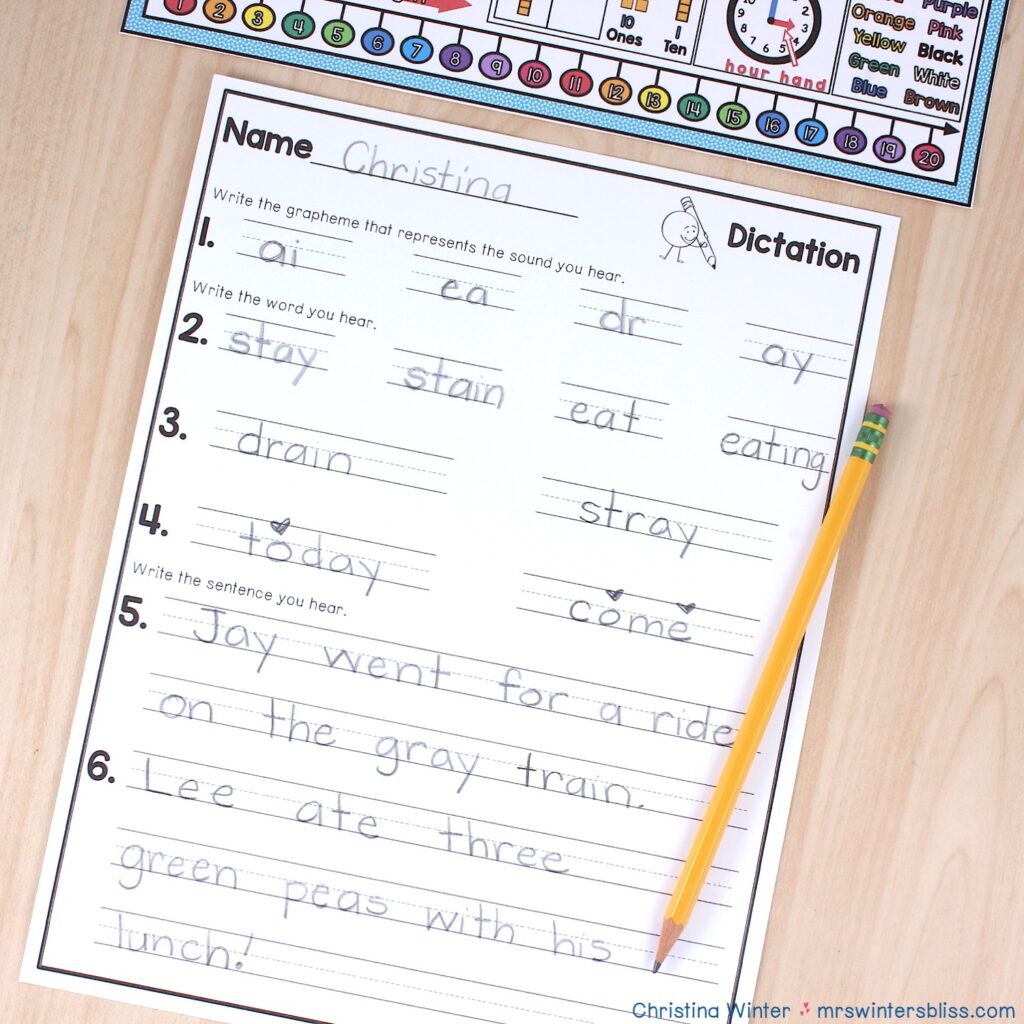
Tips For Providing Extra Support in Dictation
In his book, Choosing and Using Decodable Texts, Wiley Blevins offers 3 things you can do to ensure all students are successful with dictation practice. They are:
- Model how you segment the word. If you have students who have difficulty hearing sounds in words, support them by showing how you segment the sounds. Do this by mapping out the word. Word Mapping offers a physical way to represent the relationship between the phonemes and graphemes. Students physically connect or match the letters with the sounds they represent; this helps promote the process of orthographic mapping.
- Observe and assist students as they write. As students write, walk around the room and assist them as needed. You may need to help students with the proper stroke procedure for writing letters or direct them to the correct spelling of a sound on your sound wall. When you read the full sentence, encourage students to focus on one word at a time. For multisyllabic words, focus on one syllable at a time.
- Offer feedback. After each word is completed, write the word on the board so students can correct their own work. A key component of dictation is self-correction! It is important for students to begin to notice and correct their own errors.
Yearlong Dictation Practice Resource
If you are looking for a simple way to bring dictation practice into your classroom my Yearlong Dictation Resource for Kindergarten, first and/or second grade is all you need!
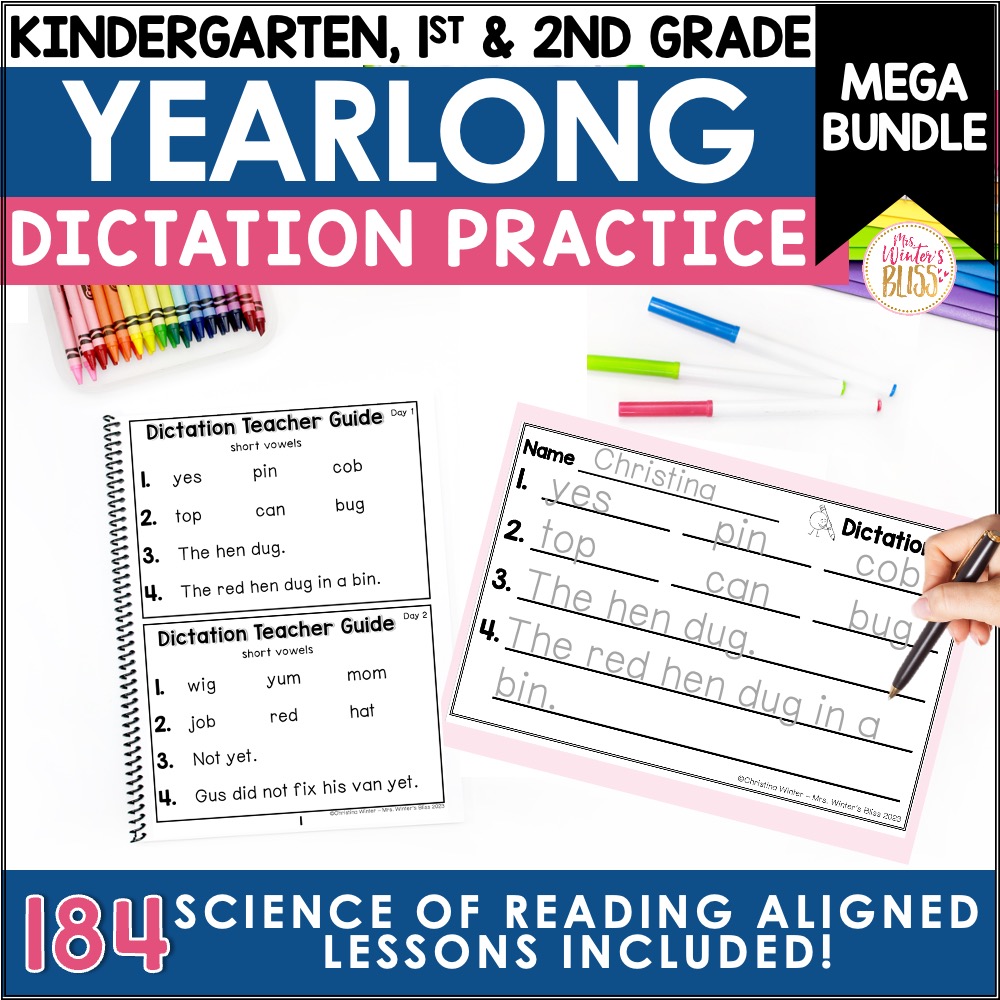
This resource follows a research-based scope and sequence and includes dictation practice activities for each week of the school year.
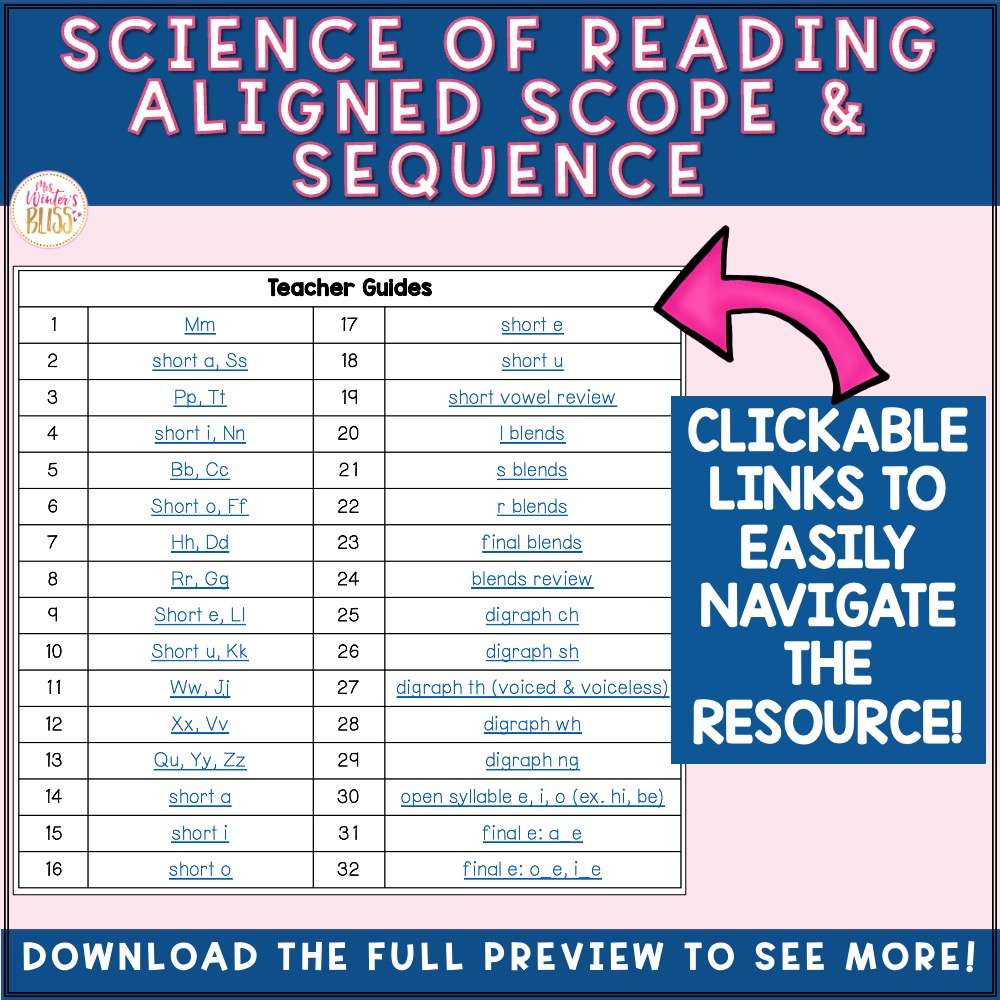
Each week includes 2 teacher guides that highlight the week’s focus skill, as well as previously learned phonics skills. In addition, students get practice with heart words (irregularly spelled high-frequency words) in the sentence portion.
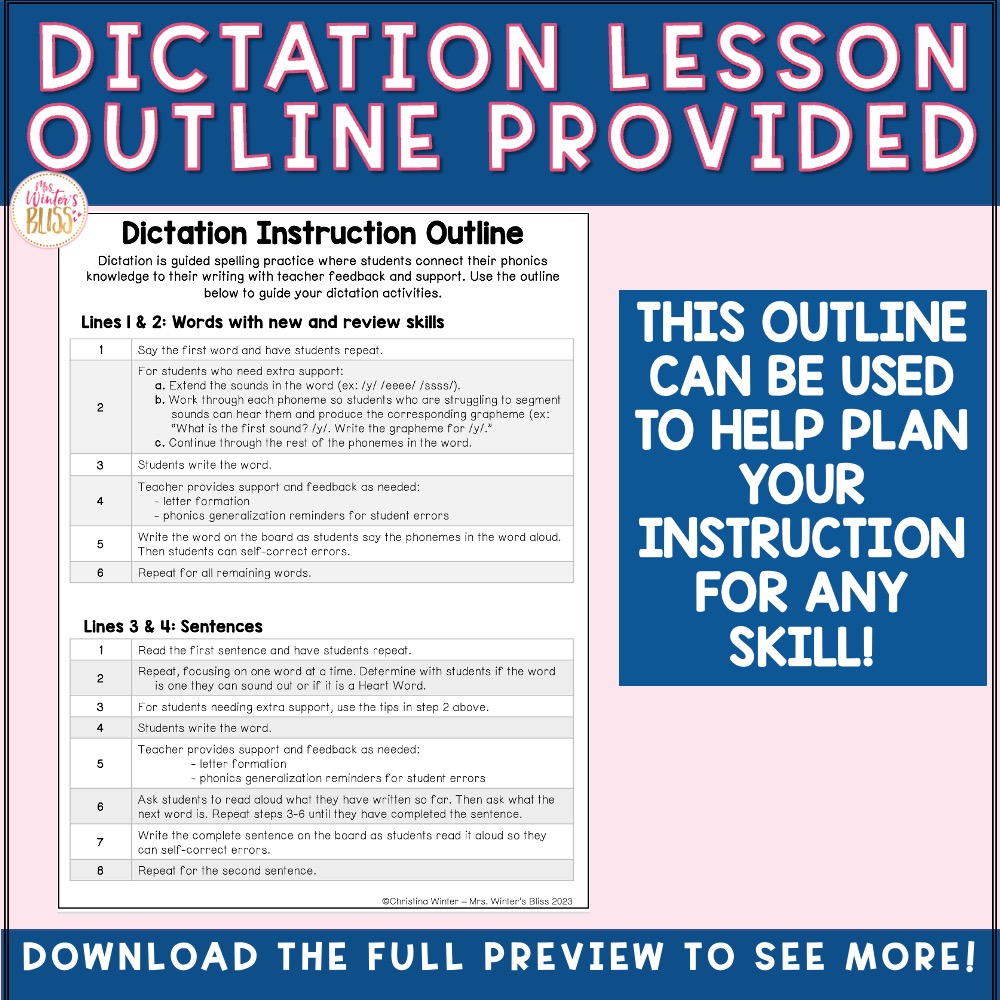
A lesson outline for teacher guidance and a sample lesson are also included. The resource includes a variety of student dictation recording sheets so you can choose the one that works best for your students.
Take a closer look at this Yearlong Dictation Resource here.
Free Dictation Resources
To help you get a dictation routine started in your classroom, I’m happy to share these FREE dictation worksheets! This freebie offers you multiple options for dictation. You can use the half sheet for a quick dictation check-in or the full sheet for extended practice. I’ve also included primary and secondary lined versions to differentiate for students’ needs. Download it here and begin using it right away!
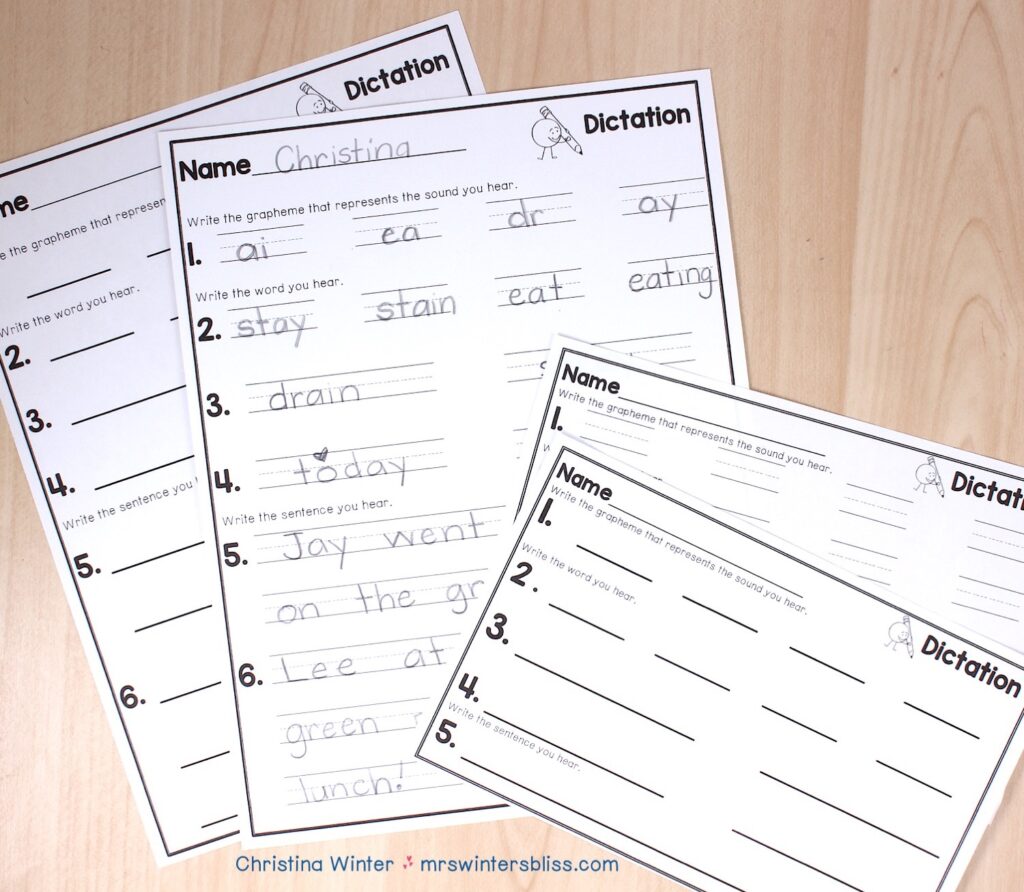
I hope the information and resources I have shared today help you to better understand the importance of dictation and motivate you to bring this powerful phonics practice routine into your classroom!
–PIN for LATER–


